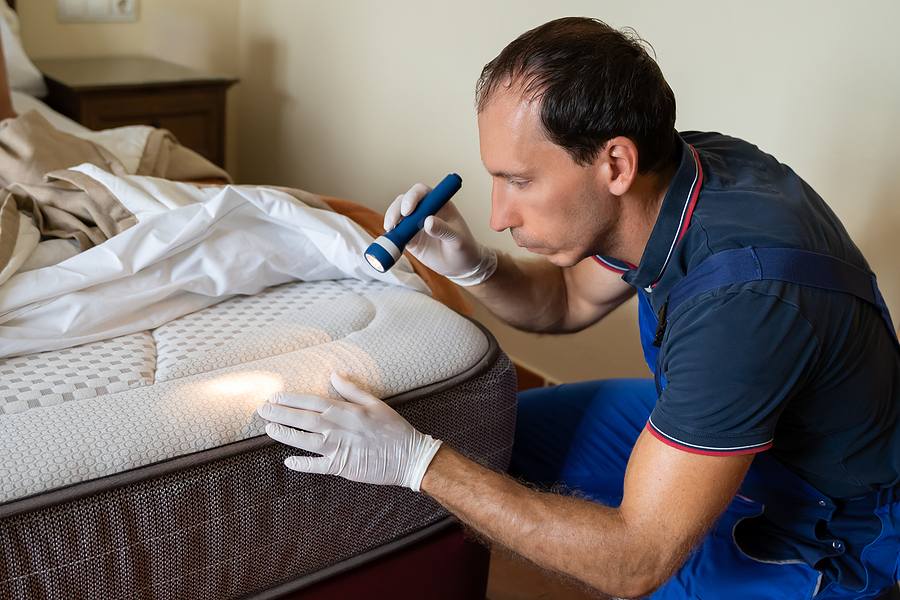A1 Bed Bug Removal Houston: Relied On Extermination Providers
Comprehending the Lifecycle of Insects for Targeted Control Methods
Comprehending the lifecycle of insects is an essential element of efficient insect administration techniques. By comprehending the numerous phases of advancement that bugs undertake, an extra targeted and specific technique can be embraced to control their populaces. This understanding not only clarifies the vulnerabilities within the parasite lifecycle yet likewise paves the means for carrying out calculated steps that can interrupt their growth and recreation cycles. Via a deeper understanding of how parasites grow and progress, tailored control techniques can be designed to resolve particular points in their lifecycle, eventually resulting in even more successful bug monitoring results.
Significance of Recognizing Insect Lifecycle
Recognizing the lifecycle of pests is crucial for developing efficient and targeted control approaches in insect administration. By understanding the various stages a bug experiences from egg to adult, insect control specialists can recognize susceptible points in the lifecycle where treatment can be most effective. Knowing when larvae are most active can aid determine the ideal timing for using larvicides. Additionally, comprehending the life-span of a bug varieties can assist in predicting populace development patterns and potential invasion threats.
In addition, identifying the certain environmental problems essential for each and every phase of the parasite's lifecycle can guide decisions on environment alteration or exemption techniques to interfere with the lifecycle and minimize insect populations. This knowledge enables pest monitoring specialists to carry out positive steps as opposed to relying only on responsive treatments, resulting in more lasting and long-lasting bug control services. Ultimately, a complete understanding of bug lifecycles empowers pest control experts to customize their methods efficiently, making the most of and decreasing ecological impacts control end results.
Secret Phases in Parasite Advancement
To successfully apply targeted control approaches in parasite monitoring, a critical facet exists in thoroughly determining and comprehending the essential stages in pest development. Pest growth commonly is composed of a number of crucial stages that are important for their lifecycle and administration.

Vulnerabilities in Parasite Lifecycle
Throughout the numerous stages of a parasite's lifecycle, unique vulnerabilities emerge that can be strategically targeted for efficient control measures. One critical susceptability hinges on the egg phase, where pests are frequently extra vulnerable to particular insecticides or organic control agents because of their soft outer covering, making them less complicated targets for intervention. In addition, the larval or nymph stage offers vulnerabilities as bugs go through rapid development and development, needing high energy usage that can be exploited by interrupting their food resources or presenting growth inhibitors. Pupal stages, characterized by immobility and improvement, supply a window for targeted control with physical obstacles or details treatments that impede effective appearance. Adult insects, while a lot more durable due to their reproductive capability, can still be prone throughout breeding or egg-laying tasks, which can be interrupted with pheromone traps or sterilization techniques. Understanding these vulnerabilities in the insect lifecycle is necessary for creating visit here specific and reliable control approaches that properly take care of parasite populaces while minimizing ecological influence.
Implementing Targeted Control Procedures

Executing targeted control actions usually involves a multi-faceted strategy. This may include environment adjustment to make the setting much less hospitable to parasites, such as eliminating standing water for insect control or sealing access points for rats. Additionally, organic control methods can be utilized, where natural killers or pathogens are presented to keep insect populaces in check.
Chemical control, such as the cautious application of chemicals, is one more usual technique. It is necessary to use these materials judiciously to lessen ecological impact and prospective injury to non-target varieties - A1 Bed Bug treatment houston. Integrated Pest Administration (IPM) approaches that combine different control measures in a collaborated and lasting fashion are frequently the most reliable in achieving long-lasting parasite monitoring goals. By over here carrying out targeted control actions based on a complete understanding of parasite lifecycles, parasite populaces can be properly controlled while reducing dangers to human health and wellness and the setting.
Improved Insect Management Practices

In addition, the consolidation of organic control agents, such as natural killers or pathogens of bugs, can assist decrease dependence on chemical pesticides and advertise a more well balanced community. Carrying out physical obstacles and traps can likewise be component of enhanced insect administration techniques, providing safe and targeted solutions for insect control. In addition, making use of pheromones and other semiochemicals can interrupt pest breeding patterns and interaction, leading to decreased insect populations gradually.
Verdict
By determining essential stages in pest growth and susceptabilities in their lifecycle, targeted control procedures can be executed to reduce parasite populations. Enhanced insect administration methods can help lower the dependence on broad-spectrum pesticides and advertise more eco pleasant and sustainable hop over to these guys parasite control techniques.
Understanding the lifecycle of pests is crucial for establishing effective and targeted control approaches in insect monitoring. By comprehending the various phases a pest goes via from egg to adult, parasite control experts can identify prone points in the lifecycle where treatment can be most successful. Inevitably, a complete understanding of pest lifecycles equips pest control professionals to tailor their methods effectively, optimizing and minimizing environmental influences control outcomes.
By executing targeted control actions based on a comprehensive understanding of parasite lifecycles, pest populations can be successfully regulated while minimizing threats to human health and the atmosphere.
By recognizing key stages in bug growth and susceptabilities in their lifecycle, targeted control measures can be executed to lessen parasite populations.